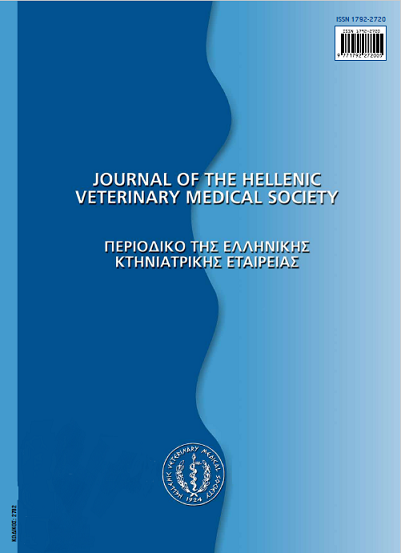Τhe first report of Linguatula serrata in grey wolf (Canis lupus) from Central Balkans
Resumen
Linguatula serrata is a cosmopolitan, bloodsucking parasite found in both domestic and wild animals. Humans are not considered as its main hosts but can act as both intermediate (visceral linguatuliasis) and final hosts (nasopharyngeal linguatuliasis). Reports on wild canids as definitive hosts of this parasite are scarce. During 2009-2011 the autopsy was performed on 42 legally hunted grey wolves (Canis lupus) from Serbia and Former Yugoslav Republic of Macedonia (FYROM). Only one specimen was infected with a single adult female of L. serrata. The parasite was found in the nasal cavity of the grey wolf. The infected male wolf was shot in the eastern part of the territory of Former Yugoslav Republic of Macedonia (FYROM). This finding is the first record of linguatuliasis in wolves from FYROM. Previous records of this parasite from the central Balkans region originated from dogs, cattle and hares. Only few records of this parasite are known for the grey wolf in general.
Article Details
- Cómo citar
-
PAVLOVIĆ, I., PENEZIĆ, A., ĆOSIĆ, N., BURAZEROVIĆ, J., MALETIĆ, V., & ĆIROVIĆ, D. (2018). Τhe first report of Linguatula serrata in grey wolf (Canis lupus) from Central Balkans. Journal of the Hellenic Veterinary Medical Society, 68(4), 687–690. https://doi.org/10.12681/jhvms.16077
- Número
- Vol. 68 Núm. 4 (2017)
- Sección
- Case Report

Esta obra está bajo una licencia internacional Creative Commons Atribución-NoComercial 4.0.
Authors who publish with this journal agree to the following terms:
· Authors retain copyright and grant the journal right of first publication with the work simultaneously licensed under a Creative Commons Attribution Non-Commercial License that allows others to share the work with an acknowledgement of the work's authorship and initial publication in this journal.
· Authors are able to enter into separate, additional contractual arrangements for the non-exclusive distribution of the journal's published version of the work (e.g. post it to an institutional repository or publish it in a book), with an acknowledgement of its initial publication in this journal.
· Authors are permitted and encouraged to post their work online (preferably in institutional repositories or on their website) prior to and during the submission process, as it can lead to productive exchanges, as well as earlier and greater citation of published work.




